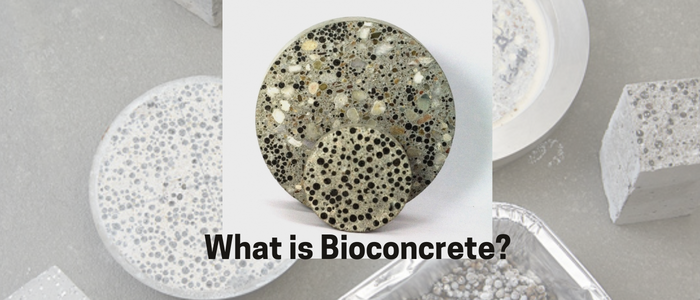The majority of the time, however, factors like passing time, wind, rain, the environment, and disturbances in the earth’s crust can cause cracks to appear in concrete. These cracks let detrimental substances seep into the concrete such as sulfates, chlorides, etc. The moisture may slowly corrode the steel rebar reinforcements which used in practically every concrete construction in existence. Some other mechanisms may damage the concrete itself and cause cracking and spalling of concrete.
What is Bioconcrete?
In early 2016, microbiologist Henk Jonkers from Delft University in the Netherlands came up with the solution of a self-healing concrete product by exploiting the healing properties of nature. Jonkers developed a sort of concrete that can really reconstruct itself as moisture enters the inevitable cracks, gaps, and holes by adding a new type of bacteria and calcium lactate capsules to the initial concrete mixture.
The biodegradable plastic shell of the calcium lactate is destroyed by moisture when it seeps into the bioconcrete. The bacteria that feed on the calcium lactate and produces limestone are then awakened by the calcium lactate. The limestone expands to fill in the cracks left by the water while this bacterial process takes place, rebuilding the structure from the inside out and entirely sealing the original site where the crack started.
This form of concrete is ideal for weather-exposed structures and locations that are challenging for maintenance personnel to reach. In the future, there won’t be a need for costly, difficult repairs because of this.
Thus, Bioconcrete can be defined as:
the concrete prepared through the addition of bacteria with the capacity for precipitation of calcium carbonate (MICP), and aids in sealing the cracks that appear in it, which is characterized as a self-healing property (Jonkers, 2011).
Look at the following image:

On the left, the image shows a developed crack in the concrete sample, and on the right, the image shows the status of the crack after 56 days of healing. Seems a potential very effective solution for the cracking problem in concrete.
Potential Benefits of Bioconcrete
Basically, the main benefit of bioconcrete is going to be the creation of maintenance-free structures such as bridges, tunnels, and roads, etc. This will cut down billions of annual maintenance fees.
Limitations of Bioconcrete
The main limitation that exists for bioconcrete at the moment is the higher cost of construction, compared to traditional concrete. This is because the cost of bioconcrete is twice the cost of regular concrete manufacture, aking it only viable for projects where leakage and corrosion are particularly problematic, such as underground and underwater structures.
Thus, research is directed at the moment to test ways and techniques to reduce the cost of bioconcrete to make it suitable for all concrete and thus, developing sustainable structures.
Read Also:
